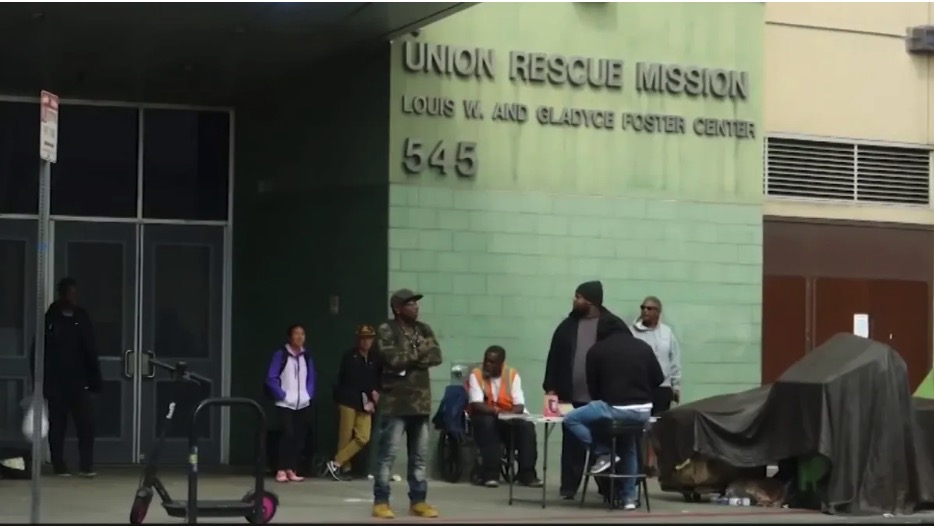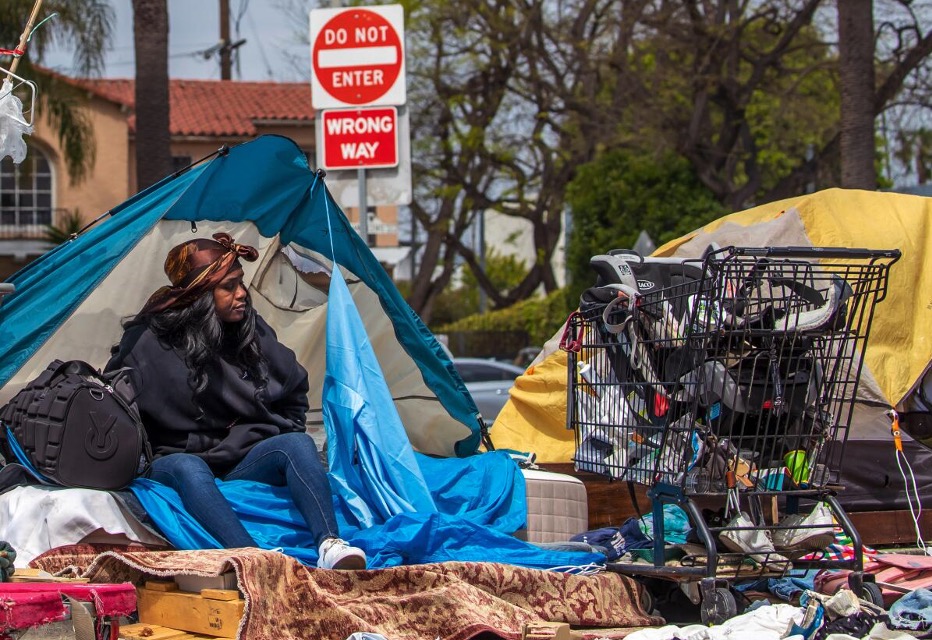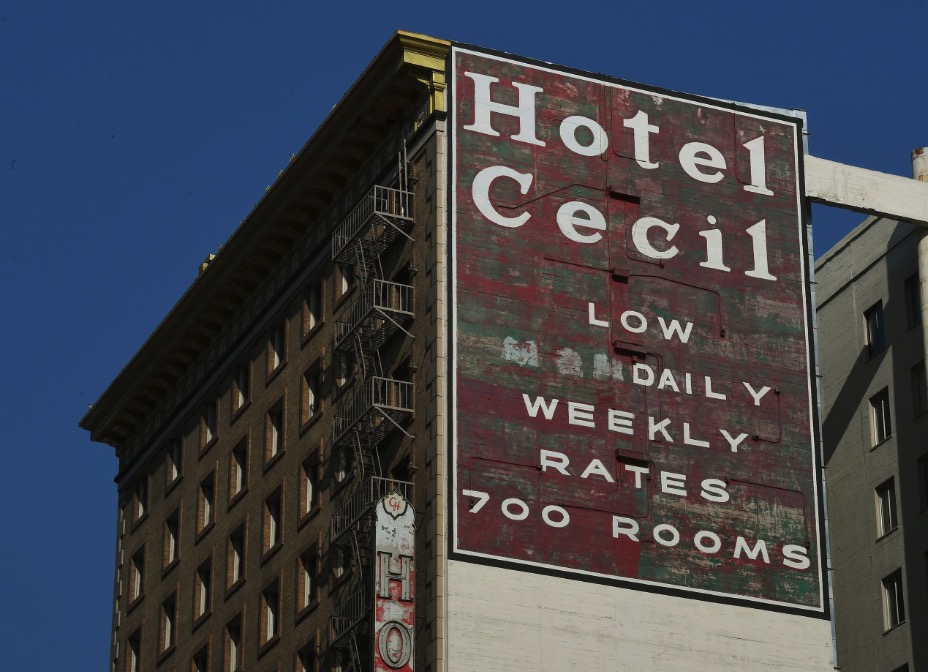Comments
iAUDIT! - Most people have at least a passing familiarity with Dante’s Inferno, the first book in his trilogy on Hell, Purgatory, and Heaven. His vivid depiction of the nine levels of Hell, each worse than the previous one, have influenced theology and cultural ideas about sin and punishment for centuries. He created images of the damned suffering a wide range of horrible tortures, from eternally battling one another in a putrid River Styx, to being trapped in flaming open graves. Dante may have written Inferno as a commentary on Medieval Italian politics, but his book has resonated with readers for more than 700 years.
Regardless of one’s beliefs on Heaven and Hell, Dante’s imagery has served as an allegory for everything from war to corporate greed. Inferno vividly describes the full spectrum of human suffering, from extreme loneliness to unbearable physical pain. If there is a modern-day equivalent to such imagery, it could easily be Los Angeles’ homeless shelter system. Like damned souls descending ever further into progressively gruesome tortures, many homeless people move from dangerous and fetid encampments into equally dangerous and mismanaged shelters, and all too often, back onto the streets, worse off for the experience.

Encampments, rather than the “visions of love and support” portrayed by Kenneth Mejia’s assistant Ashely Bennet, are often the source of criminal activity, disease, and death. As vividly described in a Voice of San Francisco article, encampments are centers of everything from serial drug abuse to human sex trafficking, to murder. While Ms. Bennett was vociferously (and physically) interfering with the Echo Park clean-up, a young 18-year woman died of a drug overdose in one of the encampment’s tents. The Voice of San Francisco article depicts conditions in a large encampment in words that could easily be lifted from the Inferno. Although organizations like Knock LA want us to believe encampments are alternative communities of reasonable, supportive, and responsible residents, many urban campers have serious untreated mental illness or substance abuse problems, which are exacerbated by the dystopian conditions in encampments.
Inferno reserves the eighth level of Hell for hypocrites, who are doomed to eternally wander under the weight of lead robes gilded with gold, representing their outward self-righteousness, which only hides their deceitful ways. If a modern-day group qualifies for such punishment, it is the self-appointed homeless advocates, who oppose clearing encampments because shelters are dangerous. That may be true enough, as we will soon see, but they’re dangerous because they simply move people with untreated behavioral problems from the streets into buildings, with no requirement or expectation they change their anti-social activities. Advocates seem to be afflicted with a serious case of cognitive dissonance. They say encampments are populated by people who find community, love and support for one another; but shelters, where those same people are housed, are dangerous.

One would think, given the high incidence of mental illness and substance abuse among the unhoused, shelters would encourage sobriety and treatment. Quite the opposite applies. LAHSA’s Scope of Required Services (SRS) for Interim Housing clearly states providers must practice Housing First/Low Barrier-Harm Reduction admissions policies. Specifically, the SRS states:
2. Contractors must NOT screen out participants, deny referrals, or delay scheduling an intake appointment based on any of the following criteria:
Past program participation or previous stay at Contractor facilities
Lack of COVID-19 vaccination or test documentation
Lack of tuberculous test (TB) documentation
Lack of Service Animal/Emotional Support Animal (ESA) documentation
Lack of sobriety
Lack of income or employment status
Lack of identification documentation
The presence of mental health issues, disabilities, or other psychosocial challenges 2.9. Lack of a commitment to participate in treatment
Justice system involvement
Presence of or number of evictions
Any other criteria thought to predict challenges/barriers to long-term housing stability.
3. Contractor must NOT permanently ban participants from re-entering the RM-IH Program, regardless of reason for participant’s exit or termination from previous enrollments in Contractor’s programs.
As a matter of policy, shelters will accept anyone in any condition. While this may sound compassionate, the practical result is people with profound behavioral or social problems are mixed with families, the elderly, and other vulnerable populations. While some specialized interim housing is available for at-risk groups, most facilities operate on an unrestricted admission philosophy. As an article in The Hill details, housing active drug users with people trying to recover from addiction undermines sobriety efforts and often results in people leaving shelters for the streets; the recovering person to get away from close-up drug use, and the active user ejected for behavioral problems.
The SRS’ list of conditions shelters must accept includes possible exposure to tuberculosis, a disease one associates with Victorian hospital “consumption wards”. Because of the way many shelters are managed (or mismanaged), a comparison to 19th century madhouses may be more appropriate than we want to believe.
Starting with a population largely made up of people with serious mental, drug, or criminal behavioral problems would pose serious problems for even the highest performing shelter operators. But, as with many other homelessness programs, shelters are often mismanaged and subject to almost no effective oversight.
Over the past several months, Calmatters.org has been running a series of investigative articles on California shelter operations. Reporters found instances of abuse by security staff, lack of performance and safety data, and assault—including murder—among shelter residents. In North Hollywood, a shelter operated by L.A. Family Housing has been criticized for uncontrolled crime and violent behavior in the surrounding neighborhood. Likewise, the community around Venice’s Bridge Home experienced an 88 percent increase in crime after the shelter opened. It is little wonder residents of Rancho Park opposed a new shelter—operated by L.A. Family Housing—that Council member Yaroslavsky insisted was needed, and approved despite community objections. Occupants of the infamous Cecil Hotel recently protested filthy living conditions in the so-called affordable and subsidized facility.

Shelter management organizations claim they have no authority to control residents’ behavior outside the facilities, while doing little to control it inside. The City ignores encampments near shelters. Some people use the shelters for meals and showers, then return to their tents to resume activities that contribute to their homelessness.
Homeless people face a Hobson’s Choice; continue living on the street in encampments exposing them to crime and disease at rates far above the housed, or enter Stygian shelters where they are equally endangered by fellow residents and abusive or negligent staff.
Details on shelter operations are notoriously opaque, with little or no reliable data on services and successful housing rates. For example, the Calmatters story on shelter safety notes L.A. County often reports problems like insect and vermin infestations, and operational problems, but does not report deaths or most criminal activity in shelters. Although the City’s homelessness program website includes data on transfers from Bridge Housing to permanent housing, the data conflict. In its latest (third quarter) performance report from LAHSA, the City shows no transfers from bridge housing to transitional or permanent housing, (page 9 of 13). However, another report on the same webpage, that reports outcomes from programs funded by a state homelessness grant, shows transfers from every Bridge Home location (pp 2-4 of 21), totaling 135 people. Which is correct? How can the City document its success if it can’t provide the public with consistent reports? The state grant report is all the more confusing because its claimed performance seems disconnected to the number clients it serves. For example, page 4 of the report states 16 clients were placed into permanent housing in the third quarter of fiscal year 2023-24, from the bridge home on St. Andrew’s Place. However, it says 16 is “43 percent”, but 43 percent of what? 106 clients were “document ready”, but 16 is hardly 43 percent of 106. 16 is 43 percent of 37, which appears nowhere in the report. Inconsistent and confusing reports like this are a major reason most people have no faith in the City’s claims of success in sheltering the homeless.
As far as services such as job counseling and mental health are concerned, the City provides no information. However, a recent report from a coalition of advocacy groups sheds some light on the lack of services in the shelter system. 45 percent of Inside Safe clients have received no support services of any kind; 75 percent have received no mental health services, and only seven percent have received drug counseling. In addition, the City Controller recently announced a fraud investigation of an unnamed Inside Safe provider for supplying meals consisting of little more than instant ramen and other quick-serve packaged food. With appallingly low service numbers and lack of oversight like that, it is little wonder many homeless people report conditions in shelters rivalling Bedlam itself.
For providing sketchy statistics, lack of true outcomes, and indifference to the well-being of their clients, service providers will receive at least $29.7 million from the City in fiscal year 2024-25, per a CAO’s Office report, (page 54 of 59), billed by LAHSA, an agency notorious for its inability or unwillingness to enforce contract requirements on is service organizations. If we’re willing to believe 135 people were placed in permanent housing, that’s a cost of about $220,000 per client.
Although there is truth to the belief that many unhoused people are “service resistant”, many may have good reason to resist being placed in shelters where they’ll find conditions little better than the street. State and local government may not be able to keep everyone from falling into homelessness, but it can certainly make shelters more humane. Current shelter conditions are just more evidence of how badly the current way of doing business has failed.
Whether one calls it Hell, Perdition, Gehenna, or Inferno, trading one hellish environment for another is a choice no one should have to make. Perhaps there should be signs placed above the entrances to local shelters quoting Dante: “Abandon all hope, ye who enter here”.
(Tim Campbell is a resident of Westchester who spent a career in the public service and managed a municipal performance audit program. He focuses on outcomes instead of process.)






